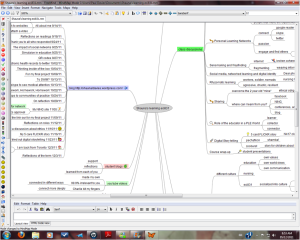It is hard to believe that we are already at the end of the semester as it only seemed like yesterday that I spent hours upon hours editing and writing my first post. Over the course of the term, I have become more comfortable sharing my thoughts in the written word for all to see and the next hurdle is speaking for a video recording as no matter how hard I try it just sounds fake! There must be some kind of switch in brain that tells me to speak funny or at least I hope that I do not sound like that each day! I can’t do anything about my voice it just seems to be the tone. In fact I have had that issue the whole semester as I did podcasts for one of the nursing classes I was helping with. When I played back the recording it sounded like I was dragging out each word so I recorded it a hundred times and I think by the end I was speaking so fast no one understood. I think that I am going to have to continue to listen, record, re-record and yet again until I can find that happy medium.
For my final summary I chose to do a Shauna’s mindmap of learning. You can see a picture of a portion of it below or click on the pdf. The mindmap is a diagram used to represent words and ideas. I chose to so the mindmap as I will be using this next term with my clinical group to map out anything such as the pathophysiology of a disease process or why you would give one pain medication versus another. As these programs are freely available on the web, I think it will be good to try. The program I used was called FreeMind. Overall I found the program pretty easy to use but it seemed quite restrictive. You could continue to add on levels of headings (child nodes move you to the next level or a sibling node adds another piece to one common node) but once you continue to add what you learned it really becomes crowded. The advantage of using the mindmap is that all of this is centered around one topic which for this assignment was my learning. As the mindmap itself would not be that exciting to share in class on Tuesday I made a short video to accompany the mindmap. I have it attached below.
The mindmap is a diagram used to represent words and ideas. I chose to so the mindmap as I will be using this next term with my clinical group to map out anything such as the pathophysiology of a disease process or why you would give one pain medication versus another. As these programs are freely available on the web, I think it will be good to try. The program I used was called FreeMind. Overall I found the program pretty easy to use but it seemed quite restrictive. You could continue to add on levels of headings (child nodes move you to the next level or a sibling node adds another piece to one common node) but once you continue to add what you learned it really becomes crowded. The advantage of using the mindmap is that all of this is centered around one topic which for this assignment was my learning. As the mindmap itself would not be that exciting to share in class on Tuesday I made a short video to accompany the mindmap. I have it attached below.
I will take many things away from the course. Looking back I believe that we really did develop our own personal learning network. We were able to connect with each other through the use of tools such as good reader and twitter (okay so I promise I will get better at this and making a video). I value sharism and throughout the semester I really tried to put myself out there so that I could get feedback and learn from my mistakes. I experimented with twitter, found tweet deck to be a wonderful tool to help me sort through all of the tweets. I also joined LinkedIn and started the technology nurse group on Facebook. As I wanted to continue to try new things in the classroom, my PowerPoint slides became only pictures. I tried various tools such as digital storytelling and introduced (yes introduced) the nursing students to twitter as they knew nothing about it.
I really began to put myself out there on the internet so I thought for the fun of it I would put my name in google alert and it alerted me once (but that is a start!).
We were asked if we put our best work out on the Internet and I would have to yes I have. My NING site that I have developed will hopefully be able to become public in the next few months (just have to work out the ethics). I am very excited about this site as it is a way for patients with heart failure, family members, friends and health care providers to come together to learn from each other and make connections. I will be talking more about this project in a later post.
With all of the this learning, the question becomes where can you learn from me? I hope to use Twitter more next term with my clinical group. My supervisor and I will be working on an open access journal for nursing which will be exciting. I also plan to continue with this blog so that others can learn from my success and my misses (again sorry for voice recordings).
I learned so much from all of you and hope that you too will continue with your blogs if not I will follow you on Twitter.

















